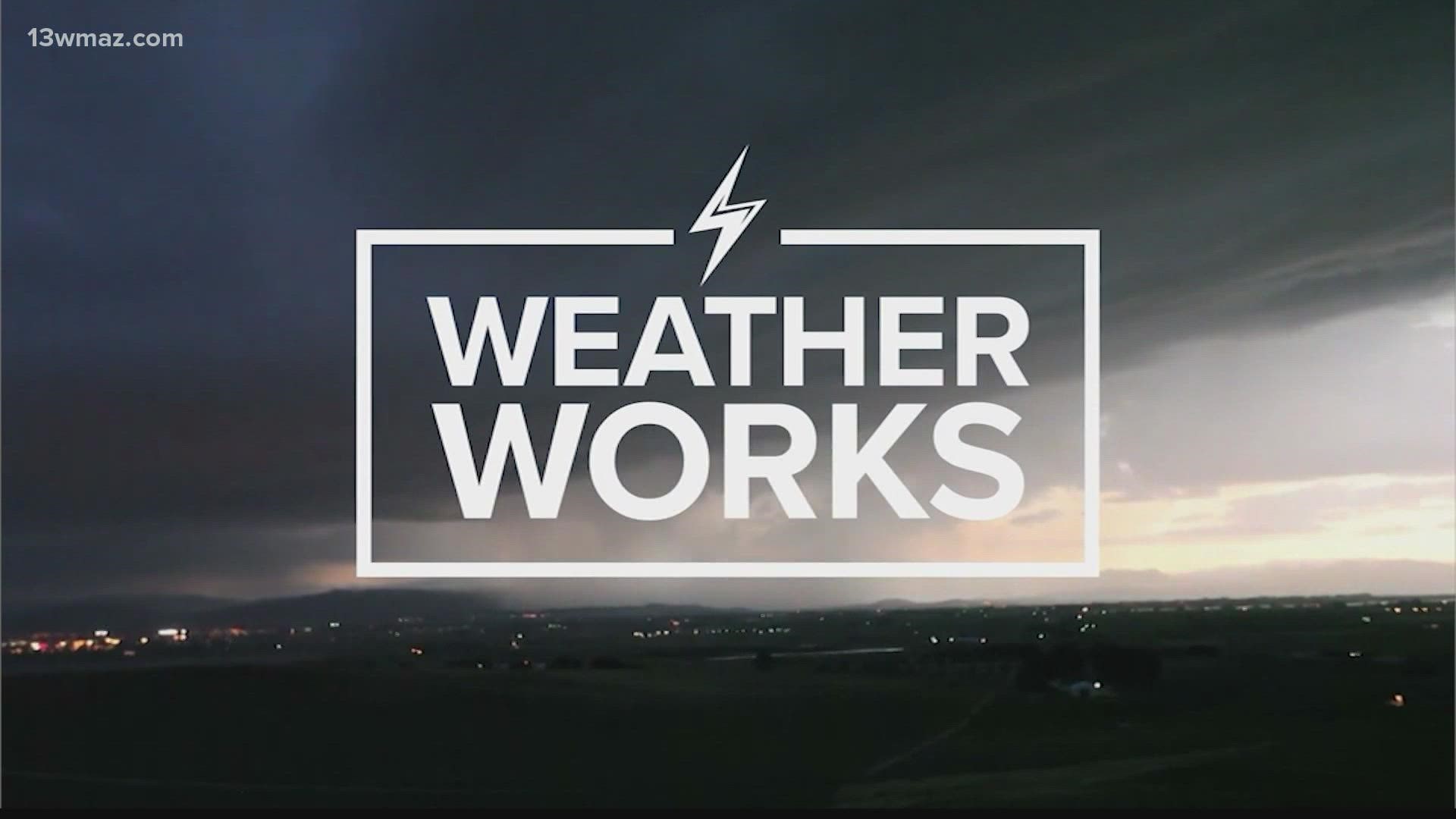MACON, Ga. — When you were in school, you may have learned about topography and then quickly forgot it. Topography is the study of land features, like mountains, creeks, and hills.
It plays a big role in weather patterns and impacts things like heat and afternoon storms.
First, let's define what topography is. According to the Oxford dictionary, topography is the arrangement of different natural or man-made features in an area. For example, a lake or a building are both considered to be topography.
Elevation is also a part of an area's topography. Hyper locally, in Perry, the elevation above sea level for the city is only 364 feet. Macon's elevation is 381 feet, while Atlanta's elevation is much higher at 1,050 feet.
Places with lower elevations, like Perry and Macon, will usually have warmer air temperatures than higher-elevation cities like Atlanta. As height increases, the air pressure drops. As pressure drops, this allows the temperatures to drop.
This is particularly important in the summer with afternoon showers and storms. To get the storms going, there needs to be enough heat energy during the hottest parts of the day. Lower-lying areas could see more storms in the summer because the air temperatures are hotter.
Moving north through Georgia, you reach the Appalachian Mountains. Mountainous terrain can create their own clouds.
As moist air is forced to rise on the windward side of a mountain, it cools and condenses. This cooled, condensed air makes what we call "orographic clouds." On the other side of the mountain, the air sinks and becomes dry.
Therefore, the windward side of mountains is much greener and more humid than the leeward side.
And that's how topography affects the weather!
If you have any questions on weather phenomena and why they work, you can email us at news@13wmaz.com or send us a message on Facebook. Your question may be the next Weather Works topic.

